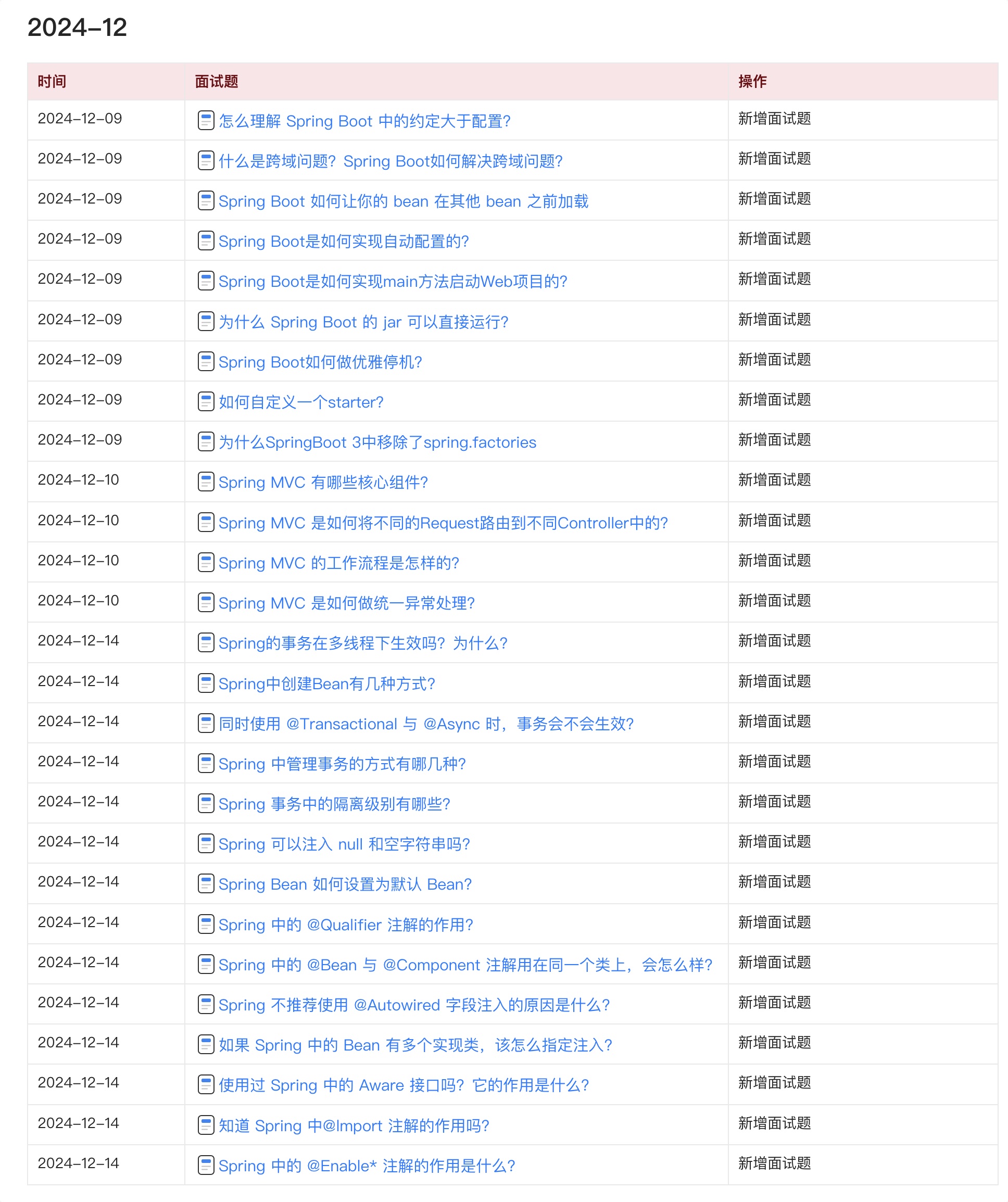无论是与Feign整合,还是独立使用Hystrix,最终都会调用HystrixCommand.execute()触发Hystrix的工作流程。所以对源码的分析最终回到了Netflix Hystrix本身。从本章开始,我将直接分析Netflix Hystrix的源码,我们先从HystrixCommand开始,重点关注它的核心逻辑,忽略与RxJava相关的代码。
这么说不是很准确,HystrixCommand提供了四种执行方法,但底层是一样的,本章仅以exetute进行分析。关于Hystrix的底层工作机制,最好的参考资料就是Netflix的官方文档:https://github.com/Netflix/Hystrix/wiki/How-it-Works,建议各位把官方文档看完再来看我的文章。
一、HystrixCommand初始化
HystrixCommand本身的源码是比较简单的,复杂点在于它的父类AbstractCommand。我们先从HystrixCommand的初始化构造开始。当我们构建具体的HystrixCommand对象时,最终会调用AbstractCommand的构造器:
protected AbstractCommand(HystrixCommandGroupKey group, HystrixCommandKey key,
HystrixThreadPoolKey threadPoolKey, HystrixCircuitBreaker circuitBreaker,
HystrixThreadPool threadPool,
HystrixCommandProperties.Setter commandPropertiesDefaults,
HystrixThreadPoolProperties.Setter threadPoolPropertiesDefaults,
HystrixCommandMetrics metrics, TryableSemaphore fallbackSemaphore,
TryableSemaphore executionSemaphore,
HystrixPropertiesStrategy propertiesStrategy,
HystrixCommandExecutionHook executionHook) {
// 设置groupKey、commandKey、threadPoolKey、Command属性
this.commandGroup = initGroupKey(group);
this.commandKey = initCommandKey(key, getClass());
this.properties = initCommandProperties(this.commandKey, propertiesStrategy,
commandPropertiesDefaults);
this.threadPoolKey = initThreadPoolKey(threadPoolKey, this.commandGroup, this.properties.executionIsolationThreadPoolKeyOverride().get());
// 初始化HystrixCommandMetrics,用于统计调用信息(用于熔断)
this.metrics = initMetrics(metrics, this.commandGroup, this.threadPoolKey,
this.commandKey, this.properties);
// 初始化断路器
this.circuitBreaker = initCircuitBreaker(this.properties.circuitBreakerEnabled().get(),
circuitBreaker, this.commandGroup, this.commandKey,
this.properties, this.metrics);
// 初始化线程池
this.threadPool = initThreadPool(threadPool, this.threadPoolKey, threadPoolPropertiesDefaults);
//Strategies from plugins
this.eventNotifier = HystrixPlugins.getInstance().getEventNotifier();
this.concurrencyStrategy = HystrixPlugins.getInstance().getConcurrencyStrategy();
HystrixMetricsPublisherFactory.createOrRetrievePublisherForCommand(this.commandKey,
this.commandGroup,
this.metrics,
this.circuitBreaker,
this.properties);
this.executionHook = initExecutionHook(executionHook);
// 请求缓存
this.requestCache = HystrixRequestCache.getInstance(this.commandKey, this.concurrencyStrategy);
// 请求日志
this.currentRequestLog = initRequestLog(this.properties.requestLogEnabled().get(),
this.concurrencyStrategy);
/* fallback semaphore override if applicable */
this.fallbackSemaphoreOverride = fallbackSemaphore;
/* execution semaphore override if applicable */
this.executionSemaphoreOverride = executionSemaphore;
}
上面构造器的核心功能就是断路器、线程池的初始化。
二、HystrixCommand执行
接着,我们再来看HystrixCommand的执行流程。我省略了很多代码,我们重点关注HystrixCommand.execute()的整体执行流程。我下面要讲解的内容就是Hystrix官方的这张图,可以先看下以便有个印象:

2.1 AbstractCommand
HystrixCommand.execute()的内部调用了HystrixCommand.queue().get(),而HystrixCommand.queue()返回的是一个Future对象,这个Future对象的get方法实际是调用了toObservable().toBlocking().toFuture().get();:
public abstract class HystrixCommand<R> extends AbstractCommand<R>
implements HystrixExecutable<R>, HystrixInvokableInfo<R>, HystrixObservable<R> {
//...省略构造器
// Setter用于对HystrixCommand进行参数配置
final public static class Setter {
protected final HystrixCommandGroupKey groupKey;
protected HystrixCommandKey commandKey;
protected HystrixThreadPoolKey threadPoolKey;
protected HystrixCommandProperties.Setter commandPropertiesDefaults;
protected HystrixThreadPoolProperties.Setter threadPoolPropertiesDefaults;
//...省略一堆设置属性的方法
}
private final AtomicReference<Thread> executionThread = new AtomicReference<Thread>();
private final AtomicBoolean interruptOnFutureCancel = new AtomicBoolean(false);
// 核心执行方法,子类实现,这个方法最终会在execute()/queue()方法执行时被唤起
protected abstract R run() throws Exception;
// 降级逻辑,子类实现
protected R getFallback() {
throw new UnsupportedOperationException("No fallback available.");
}
// 同步执行方法
public R execute() {
try {
return queue().get();
} catch (Exception e) {
throw Exceptions.sneakyThrow(decomposeException(e));
}
}
// 异步执行方法
public Future<R> queue() {
// 原生的情况下,Future是不支持cancel()方法中止执行线程的,所以用delegate包装下
final Future<R> delegate = toObservable().toBlocking().toFuture();
final Future<R> f = new Future<R>() {
@Override
public R get() throws InterruptedException, ExecutionException {
return delegate.get();
}
//...
};
if (f.isDone()) {
try {
f.get();
return f;
} catch (Exception e) {
//...
}
}
return f;
}
//...
}
真是绕得一批,还是借用Hystrix官方的图来表述比较清晰:

可以看到当我们调用HystrixCommand.execute()时,最终会触发Observable.toBlocking().toFuture().get()的执行,阻塞获取结果。
Observable是RxJava中的东西,我不想过多讲解,现在你只要知道,HystrixCommand内部调用的是父类AbstractCommand的toObservable()。
2.2 请求缓存
我们来看下AbstractCommand.toObservable()的执行逻辑:
// AbstractCommand.java
public Observable<R> toObservable() {
// _cmd指向HystrixCommand的具体实现对象
final AbstractCommand<R> _cmd = this;
// ...
final Func0<Observable<R>> applyHystrixSemantics = new Func0<Observable<R>>() {
@Override
public Observable<R> call() {
if (commandState.get().equals(CommandState.UNSUBSCRIBED)) {
return Observable.never();
}
// 关键:这里执行Command的主流程
return applyHystrixSemantics(_cmd);
}
};
return Observable.defer(new Func0<Observable<R>>() {
@Override
public Observable<R> call() {
//...
final boolean requestCacheEnabled = isRequestCachingEnabled();
// 1.获取缓存Key
final String cacheKey = getCacheKey();
// 2.如果开启了Hystrix缓存功能,先尝试从缓存中获取
if (requestCacheEnabled) {
HystrixCommandResponseFromCache<R> fromCache =
(HystrixCommandResponseFromCache<R>) requestCache.get(cacheKey);
if (fromCache != null) {
isResponseFromCache = true;
return handleRequestCacheHitAndEmitValues(fromCache, _cmd);
}
}
// 3.缓存中获取不到,触发applyHystrixSemantics执行
Observable<R> hystrixObservable =
Observable.defer(applyHystrixSemantics)
.map(wrapWithAllOnNextHooks);
// 4.将执行结果缓存
Observable<R> afterCache;
if (requestCacheEnabled && cacheKey != null) {
HystrixCachedObservable<R> toCache = HystrixCachedObservable
.from(hystrixObservable, _cmd);
HystrixCommandResponseFromCache<R> fromCache = (HystrixCommandResponseFromCache<R>)
requestCache.putIfAbsent(cacheKey, toCache);
//...
} else {
afterCache = hystrixObservable;
}
return afterCache
.doOnTerminate(terminateCommandCleanup)
.doOnUnsubscribe(unsubscribeCommandCleanup)
.doOnCompleted(fireOnCompletedHook);
}
});
}
可以看到,上述方法的执行逻辑是:
- 如果开启了缓存功能,则首先尝试从缓存中获取结果,获取到则直接返回结果;
- 如果缓存中没有,则触发
applyHystrixSemantics()方法的执行,该方法会触发HystrixCommand的主执行流程; - 最后,如果开启了缓存,则将缓存结果并返回。
2.3 正常调用流程
接着,我们进入主流程,也就是AbstractCommand.applyHystrixSemantics()方法:
- 首先判断下熔断状态,如果断路器没打开就进入正常调用流程;
- 如果断路器打开了就走降级流程。
// AbstractCommand.java
private Observable<R> applyHystrixSemantics(final AbstractCommand<R> _cmd) {
// 内部什么都没做
executionHook.onStart(_cmd);
// circuitBreaker熔断判断
// 1.1 如果断路器未开启
if (circuitBreaker.allowRequest()) {
// 正常执行流程,隔离策略如果是线程池隔离,则什么都不做
final TryableSemaphore executionSemaphore = getExecutionSemaphore();
final AtomicBoolean semaphoreHasBeenReleased = new AtomicBoolean(false);
final Action0 singleSemaphoreRelease = new Action0() {
@Override
public void call() {
if (semaphoreHasBeenReleased.compareAndSet(false, true)) {
executionSemaphore.release();
}
}
};
final Action1<Throwable> markExceptionThrown = new Action1<Throwable>() {
@Override
public void call(Throwable t) {
// 异常时事件通知
eventNotifier.markEvent(HystrixEventType.EXCEPTION_THROWN, commandKey);
}
};
// 对于线程池隔离,一定返回true
if (executionSemaphore.tryAcquire()) {
try {
executionResult = executionResult.setInvocationStartTime(System.currentTimeMillis());
// 关键是这里:executeCommandAndObserve
return executeCommandAndObserve(_cmd)
.doOnError(markExceptionThrown)
.doOnTerminate(singleSemaphoreRelease)
.doOnUnsubscribe(singleSemaphoreRelease);
} catch (RuntimeException e) {
return Observable.error(e);
}
} else {
// 信号量获取失败,则走降级策略
return handleSemaphoreRejectionViaFallback();
}
}
// 1.2 如果断路器已开启
else {
// 降级流程
return handleShortCircuitViaFallback();
}
}
在上述的正常调用流程中,根据不同的 资源隔离策略 做了不同的处理,默认为 线程池隔离 策略,我们也主要关注这条线的执行逻辑。最终由executeCommandAndObserve这个方法触发调用:
// AbstractCommand.java
private Observable<R> executeCommandAndObserve(final AbstractCommand<R> _cmd) {
final HystrixRequestContext currentRequestContext = HystrixRequestContext
.getContextForCurrentThread();
//...
Observable<R> execution;
// 关键看这里,方法executeCommandWithSpecifiedIsolation
if (properties.executionTimeoutEnabled().get()) {
execution = executeCommandWithSpecifiedIsolation(_cmd)
.lift(new HystrixObservableTimeoutOperator<R>(_cmd));
} else {
execution = executeCommandWithSpecifiedIsolation(_cmd);
}
return execution.doOnNext(markEmits)
.doOnCompleted(markOnCompleted)
.onErrorResumeNext(handleFallback)
.doOnEach(setRequestContext);
}
executeCommandAndObserve方法内部调用了的AbstractCommand.executeCommandWithSpecifiedIsolation():
// AbstractCommand.java
private Observable<R> executeCommandWithSpecifiedIsolation(final AbstractCommand<R> _cmd) {
// 1.线程池隔离
if (properties.executionIsolationStrategy().get() == ExecutionIsolationStrategy.THREAD) {
return Observable.defer(new Func0<Observable<R>>() {
@Override
public Observable<R> call() {
executionResult = executionResult.setExecutionOccurred();
if (!commandState.compareAndSet(CommandState.OBSERVABLE_CHAIN_CREATED,
CommandState.USER_CODE_EXECUTED)) {
return Observable.error(new IllegalStateException("execution attempted while in state : " + commandState.get().name()));
}
metrics.markCommandStart(commandKey, threadPoolKey, ExecutionIsolationStrategy.THREAD);
if (isCommandTimedOut.get() == TimedOutStatus.TIMED_OUT) {
return Observable.error(new RuntimeException("timed out before executing run()"));
}
if (threadState.compareAndSet(ThreadState.NOT_USING_THREAD, ThreadState.STARTED)) {
HystrixCounters.incrementGlobalConcurrentThreads();
threadPool.markThreadExecution();
endCurrentThreadExecutingCommand = Hystrix.
startCurrentThreadExecutingCommand(getCommandKey());
executionResult = executionResult.setExecutedInThread();
try {
executionHook.onThreadStart(_cmd);
executionHook.onRunStart(_cmd);
executionHook.onExecutionStart(_cmd);
// 关键是这里:getUserExecutionObservable
return getUserExecutionObservable(_cmd);
} catch (Throwable ex) {
return Observable.error(ex);
}
} else {
return Observable
.error(new RuntimeException("unsubscribed before executing run()"));
}
}
}).doOnTerminate(new Action0() {
@Override
public void call() {
//...
}
}).doOnUnsubscribe(new Action0() {
@Override
public void call() {
//...
}
}).subscribeOn(threadPool.getScheduler(new Func0<Boolean>() {
@Override
public Boolean call() {
//...
}
}));
}
// 信号量隔离
else {
//...
}
}
我省略了信号量隔离策略的代码,我们只关注executeCommandWithSpecifiedIsolation内部最核心的一行代码,也就是return getUserExecutionObservable(_cmd):,它内部最终会执行HystrixCommand.run():
// AbstractCommand.java
private Observable<R> getUserExecutionObservable(final AbstractCommand<R> _cmd) {
Observable<R> userObservable;
try {
// 创建一个Observable对象
userObservable = getExecutionObservable();
} catch (Throwable ex) {
userObservable = Observable.error(ex);
}
return userObservable
.lift(new ExecutionHookApplication(_cmd))
.lift(new DeprecatedOnRunHookApplication(_cmd));
}
AbstractCommand内部又调用了getExecutionObservable(),来创建一个Observable对象,这个对象一旦被订阅,就会被线程池调度,并最终执行HystrixCommand.run():
// HystrixCommand.java
final protected Observable<R> getExecutionObservable() {
return Observable.defer(new Func0<Observable<R>>() {
@Override
public Observable<R> call() {
try {
// 触发HystrixCommand.run()方法的执行
return Observable.just(run());
} catch (Throwable ex) {
return Observable.error(ex);
}
}
}).doOnSubscribe(new Action0() {
@Override
public void call() {
executionThread.set(Thread.currentThread());
}
});
}
真相大白了,经过上面的分析HystrixCommand的主干调用流程应该比较清晰了(我忽略了RxJava的各种回调式代码):

总结一下,HystrixCommand执行execute方法后,最终会创建出一个Observable对象,然后订阅它,此时就会触发某个线程池去调度任务的执行,最终执行我们自定义的HystrixCommand.run()方法。
三、HystrixCommand调度
了解了HystrixCommand的执行流程,我们来思考一个问题: HystrixCommand到底是什么时候被线程池调度的,线程池又是如何去调用的呢?
还记得我们在构造HystrixCommand时,初始化了一个HystrixThreadPool吗?每一个threadPoolKey关联一个独立的线程池:
this.threadPool = initThreadPool(threadPool, this.threadPoolKey, threadPoolPropertiesDefaults);
3.1 HystrixThreadPool
HystrixThreadPool的具体实现如下,可以看到内部有一个缓存队列:
static class HystrixThreadPoolDefault implements HystrixThreadPool {
private static final Logger logger = LoggerFactory.getLogger(HystrixThreadPoolDefault.class);
private final HystrixThreadPoolProperties properties;
private final BlockingQueue<Runnable> queue;
private final ThreadPoolExecutor threadPool;
private final HystrixThreadPoolMetrics metrics;
private final int queueSize;
public HystrixThreadPoolDefault(HystrixThreadPoolKey threadPoolKey,
HystrixThreadPoolProperties.Setter propertiesDefaults) {
this.properties = HystrixPropertiesFactory.getThreadPoolProperties(threadPoolKey,
propertiesDefaults);
HystrixConcurrencyStrategy concurrencyStrategy =
HystrixPlugins.getInstance().getConcurrencyStrategy();
this.queueSize = properties.maxQueueSize().get();
this.metrics = HystrixThreadPoolMetrics
.getInstance(threadPoolKey,concurrencyStrategy.getThreadPool(threadPoolKey, properties),
properties);
this.threadPool = this.metrics.getThreadPool();
// 缓存队列
this.queue = this.threadPool.getQueue();
HystrixMetricsPublisherFactory.createOrRetrievePublisherForThreadPool(threadPoolKey,
this.metrics,
this.properties);
}
// 返回一个调度器,用于调度任务执行
public Scheduler getScheduler(Func0<Boolean> shouldInterruptThread) {
touchConfig();
return new HystrixContextScheduler(HystrixPlugins.getInstance().getConcurrencyStrategy(),
this, shouldInterruptThread);
}
}
3.2 HystrixContextScheduler
我们提交的任务最终会被HystrixContextScheduler调度:
// HystrixCommand.java
private Observable<R> executeCommandWithSpecifiedIsolation(final AbstractCommand<R> _cmd) {
// 线程池隔离
if (properties.executionIsolationStrategy().get() == ExecutionIsolationStrategy.THREAD) {
return Observable.defer(new Func0<Observable<R>>() {
@Override
public Observable<R> call() {
//...
}
// 下面方法创建一个HystrixContextScheduler调度器,执行任务
}).subscribeOn(threadPool.getScheduler(new Func0<Boolean>() {
@Override
public Boolean call() {
return properties.executionIsolationThreadInterruptOnTimeout().get() && _cmd.isCommandTimedOut.get() == TimedOutStatus.TIMED_OUT;
}
}));
} else {
//...省略信号量隔离逻辑
}
}
HystrixContextScheduler内部有一个Woker工作线程,真正负责任务的调度执行:
public class HystrixContextScheduler extends Scheduler {
private final HystrixConcurrencyStrategy concurrencyStrategy;
private final Scheduler actualScheduler;
private final HystrixThreadPool threadPool;
public HystrixContextScheduler(Scheduler scheduler) {
this.actualScheduler = scheduler;
this.concurrencyStrategy = HystrixPlugins.getInstance().getConcurrencyStrategy();
this.threadPool = null;
}
@Override
public Worker createWorker() {
return new HystrixContextSchedulerWorker(actualScheduler.createWorker());
}
// 工作线程
private class HystrixContextSchedulerWorker extends Worker {
@Override
public Subscription schedule(Action0 action, long delayTime, TimeUnit unit) {
if (threadPool != null) {
// 判断线程池是否已满
if (!threadPool.isQueueSpaceAvailable()) {
// 满了就抛出异常,走降级逻辑
throw new RejectedExecutionException("Rejected command because thread-pool queueSize is at rejection threshold.");
}
}
// 没有满就调度执行
return worker.schedule(new HystrixContexSchedulerAction(concurrencyStrategy, action),
delayTime, unit);
}
}
}
四、总结
本章,我讲解了Hystrix的整体工作流程,忽略了很多分支,重点只关注正常请求流程。说实话,Hystrix的源码由于用了RxJava框架,可读性比较差,特别是国内对于RxJava框架的应用比较少,导致这块源码的分析更加困难,我们在阅读时只要抓住核心主干就好。
关于Hystrix的熔断、请求合并、请求缓存、调用统计的代码我就不再带着大家去分析了,因为基于RxJava实现的功能实在不太好通过文章的形式去讲解。读者可以自己打开IDE,根据Hystrix官方文档去阅读相应的代码。
Java 面试宝典是大明哥全力打造的 Java 精品面试题,它是一份靠谱、强大、详细、经典的 Java 后端面试宝典。它不仅仅只是一道道面试题,而是一套完整的 Java 知识体系,一套你 Java 知识点的扫盲贴。
它的内容包括:
- 大厂真题:Java 面试宝典里面的题目都是最近几年的高频的大厂面试真题。
- 原创内容:Java 面试宝典内容全部都是大明哥原创,内容全面且通俗易懂,回答部分可以直接作为面试回答内容。
- 持续更新:一次购买,永久有效。大明哥会持续更新 3+ 年,累计更新 1000+,宝典会不断迭代更新,保证最新、最全面。
- 覆盖全面:本宝典累计更新 1000+,从 Java 入门到 Java 架构的高频面试题,实现 360° 全覆盖。
- 不止面试:内容包含面试题解析、内容详解、知识扩展,它不仅仅只是一份面试题,更是一套完整的 Java 知识体系。
- 宝典详情:https://www.yuque.com/chenssy/sike-java/xvlo920axlp7sf4k
- 宝典总览:https://www.yuque.com/chenssy/sike-java/yogsehzntzgp4ly1
- 宝典进展:https://www.yuque.com/chenssy/sike-java/en9ned7loo47z5aw
目前 Java 面试宝典累计更新 400+ 道,总字数 42w+。大明哥还在持续更新中,下图是大明哥在 2024-12 月份的更新情况:

想了解详情的小伙伴,扫描下面二维码加大明哥微信【daming091】咨询

同时,大明哥也整理一套目前市面最常见的热点面试题。微信搜[大明哥聊 Java]或扫描下方二维码关注大明哥的原创公众号[大明哥聊 Java] ,回复【面试题】 即可免费领取。

